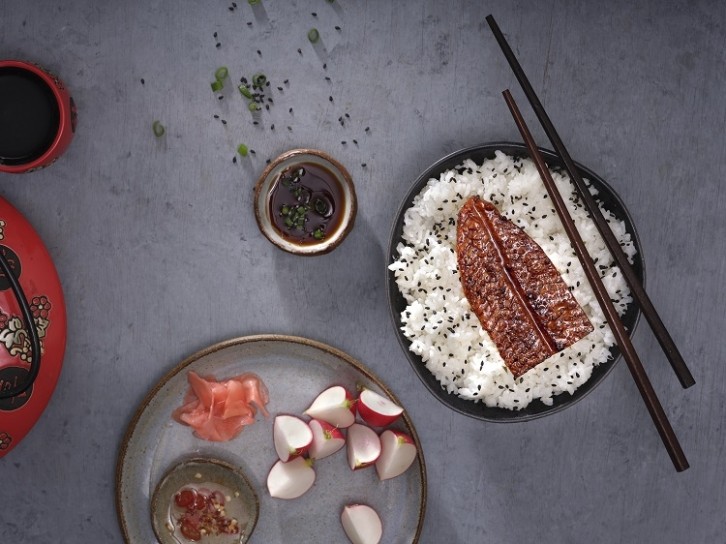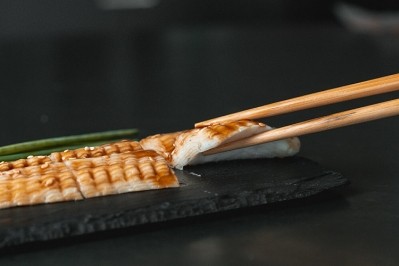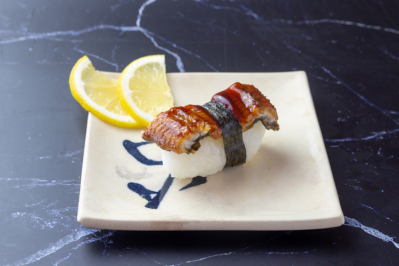Cultivated eel that ‘melts in your mouth’? How Forsea mimics ‘tender, succulent’ texture of fish and seafood
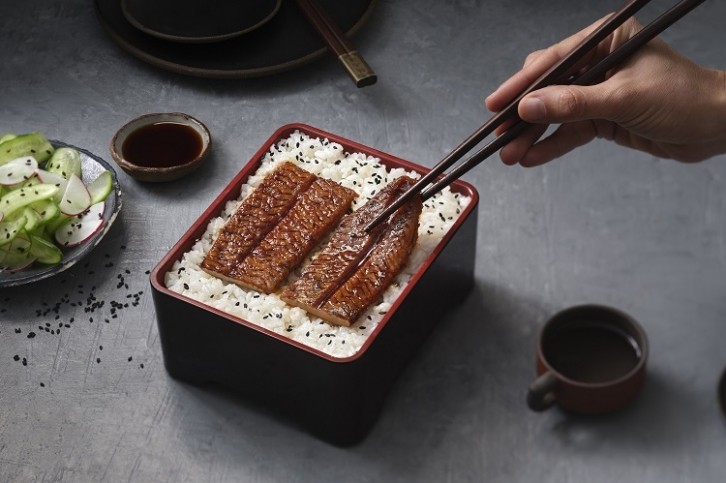
Cultured meat technology, whereby genuine animal meat is produced by cultivating animal cells, has largely focused on land-based species to date. Of the three companies that have so far achieved regulatory approval (in Singapore, the US and Israel), two make cultivated chicken, and one, beef.
But increasingly, innovators are turning to the world’s oceans and freshwater sources for inspiration. In labs around the world, one can find cultivated tilapia, scallops and fish fingers in development, and in Israel, cultivated eel.
Today (22 January), Israeli start-up Forsea Foods has announced a working proof-of-concept that it claims embodies the sensory attributes of real eel meat.
“We have been working internally with our partners at [Tokyo restaurant] SAIDO to develop a product that closely resembles the traditional one,” Forsea co-founder and CEO Roee Nir told FoodNavigator. “We managed to achieve this by applying food science practices on eel cells we grew in our lab.”
Organoid technology cuts growth factor bill
Japanese unagi eel (Anguilla japonica) is a classic of the local cuisine. Eel meat has a ‘very distinguished’ flavour and texture, which Nir explained is not comparable to any other type of fish.
“It is a fatty fish with a unique, rich complex flavour. The texture of eel is very tender and it feels as if it almost melts in your mouth.”
To replicate the texture and flavour of unagi eel, Forsea has turned to organoid technology – its proprietary method for crafting 3D microtissues composed of fat and muscle. Instead of growing animal cells in bioreactors, Forsea creates the ‘ideal environment’ for tiny, self-organised 3D tissue cultures to grow just as three-dimensional structures would grow in a living animal.
This results in microtissues ‘spontaneously’ differentiating into edible cells, and cell lines self-organising into tissue structures without the need for scaffold support. The technology not only simplifies the production process, but enhances scalability, FoodNavigator understands.
By bypassing the scaffolding stage and requiring fewer bioreactors, the process is thought to be more cost-effective, and ‘dramatically’ reduces the amount of costly growth factors required.
Making more sustainable eel from cells
Forsea’s first prototype has benefited from the skilled handiwork of executive chef Katsumi Kusumoto, who heads up vegan restaurant SAIDO. The chef has used the proof-of-concept to create two popular traditional Japanese dishes: marinated grilled eel over ice (unagi kabayaki) and hand-pressed sushi rice topped with eel slices (unagi nigiri).
“Unagi is an enduring favourite in Japan,” commented Kusumoto. “Its timeless appeal, however, is impacted by a growing awareness among the Japanese population of the need to take a more sustainable approach.
“It’s been a thrilling journey to join forces with emerging innovators and working together to deliver the traditional unagi indulgence with a clear eco-conscious.”
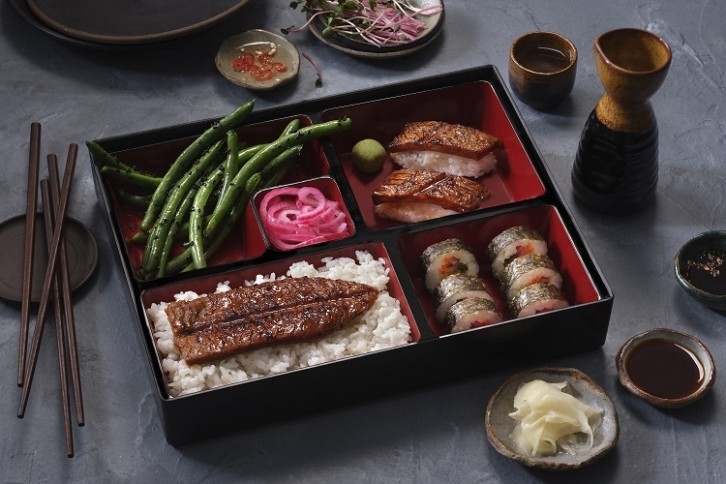
The eel market is facing increasing pressure amid sustainability concerns. Globally, the eel market mostly relies on wild eel, but eel stocks are declining and illegal trade ramping up. Demand remains high, with 1.5m people saying they eat eel more than twice a month in Japan alone, according to Statista.
Eel is also popular in other Asian countries, as well as in Europe and the US, where suppliers are also struggling to keep up with demand. These are all factors impacting supply bottlenecks, high prices, and illegal trade.
Forsea’s approach aims to combat overfishing by establishing cell banks that can be used ‘indefinitely’, explained its co-founder and CEO.
“Forsea collects eel eggs from the water. We collect these eggs very early, in a stage where there are only stem cells there. Then we work in a lab to create cell lines that have unique attributes such as unlimited proliferation capabilities and a potential to differentiate into the edible tissues we would like to create. This is being done in our lab.
“Once a master cell bank is established, it can be used indefinitely to produce all future products and there is no need to start development from the eggs again.”
Is the global eel market big enough to warrant cultivated meat investment?
For Forsea, the prototype development and collaboration with SAIDO represents a ‘major leap’ in its journey to delivering cultured seafood products to customers. “Forsea is pioneering the fusion of traditional, high quality Asian cuisine with ground-breaking technology to create the world’s first cultured unagi – one that will provide the consumer with a genuine seafood experience without putting further strain on aquatic life,” said Nir.
The cultivated eel meat is now ‘prepped for scale-up’, with the company projecting its first product will be ready for commercial launch in 2025. Although headquartered in Israel, Forsea is on the lookout for strategic partners in Japan – the country with the largest consumer base of freshwater eel – and across Asia.
“The market potential of eel is more than $10bn (€9.1bn),” responded Nir when asked whether global demand is big enough to make investments in cultivated eel worthwhile. “Indeed, the largest market is Japan but markets in Europe and the US are estimated [to be worth] hundreds of millions of USD. Also other Asian countries, including China, enjoy eel.”
The CEO stressed that Forsea’s technology will not be used for eel alone, and in fact the company does not want to be perceived as an ‘eel company’ alone – rather a ‘cultured fish and seafood company with eel as its first product’. “The company has several additional cell lines in development.”
Forsea outlines commercialisation plans
Although Japan is on Forsea’s radar for commercialisation, the Japanese government has yet to approve regulatory meat or seafood products for market. To date, Singapore, the US, and just this month Israel, are the only jurisdictions to give the greenlight to such products.
But there are signs Japan is open to cultivated meat innovation. Last year, the country’s Prime Minister Fumio Kishida accounted plans to develop a cultivated meat industry on home soil. “We will develop an environment to create a new market, such as efforts to ensure safety and development of labelling rules, and foster a food tech business originating in Japan,” he said, as reported by the Japan Economic Newspaper.
Forsea’s Nir is ‘optimistic’ about Japan’s approach towards approving cultivated meat, he revealed. Not only has Prime Minister Kishida outlined plans to reduce the country’s carbon footprint, but advance the cellular agriculture industry with a particular focus on cultivated meat and fish. And more recently it was announced that the government has provided grants to companies in the space, we were told.
“So we’re hoping that the regulatory framework in Japan will be established by the time we want to launch. Other countries such as the US and Singapore will be considered as well.”
